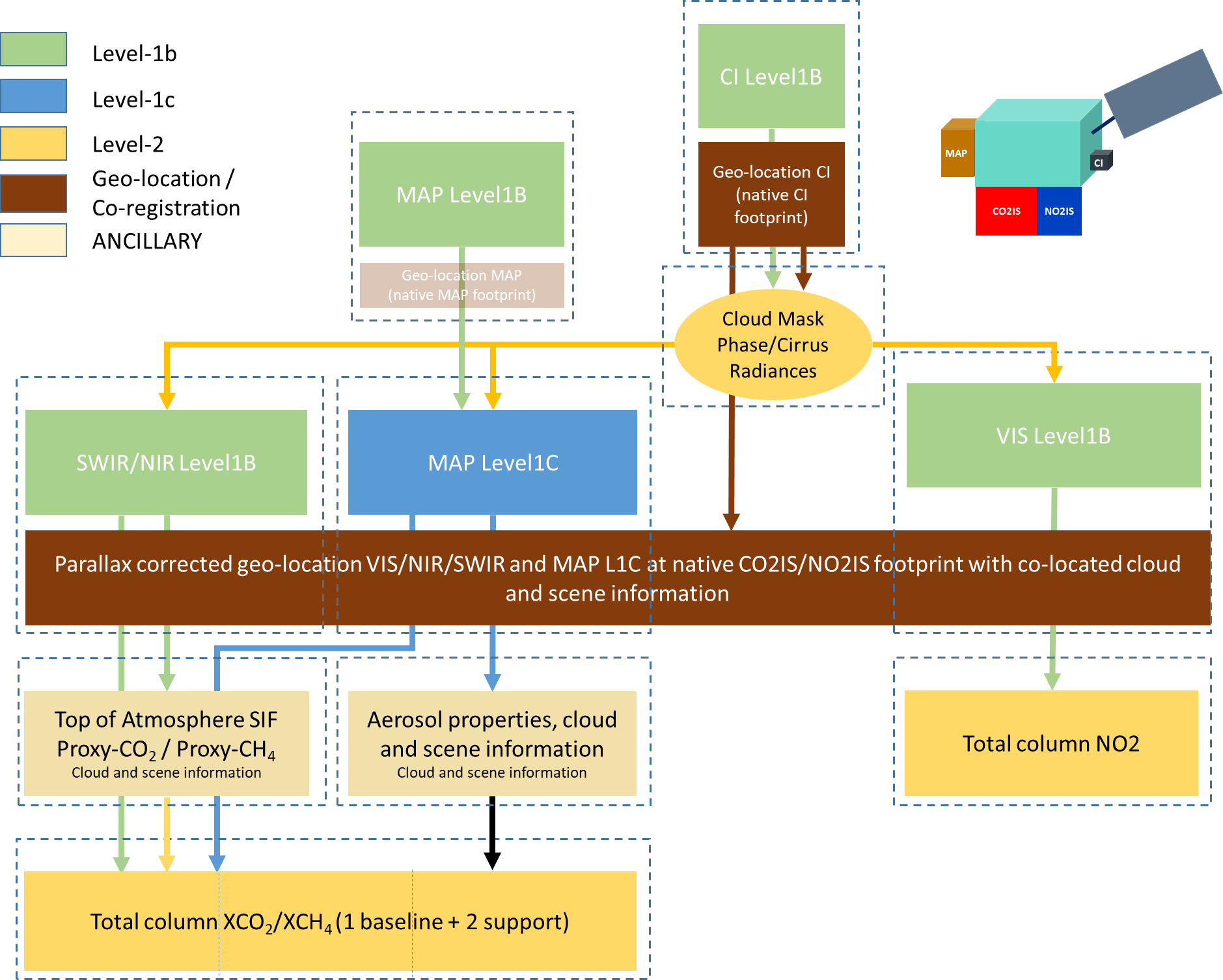28 March 2023
07 September 2020
The information produced is designed to complement and enhance the industrial level-1 processing Algorithm Theoretical Baseline Document (ATBD), in support of EUMETSAT’s CO2M ground segment development activities.
Objectives
The objective of this study it to support the definition of level 0 to 1 processing requirements for the CO2M mission. To achieve this objective, tasks in the following categories will be executed:
Activity 1: Data processing steps, inverse processing methods and error propagation.
Activity 2: Scientific algorithm data flows and functional requirements.
Activity 3: Preparation of test-data and evaluation of processing performance.
Overview
The above activities will support wider EUMETSAT work on the requirements definition for a CO2M operational level-1 processor and its processing and product monitoring, as part of the PDGS (see Figure 2).
The scientific service will:
- evaluate existing instrument functional models, existing algorithms and inverse methods based on GOME/SCIAMACHY/OMI/S5p and S5 experience (being a similar class of instruments) and will make use of the technical specifications for CO2M where already available;
- make proposals for efficient inverse methods and error propagation for the efficient application of instrument key-data and the use of in-orbit calibration, as well as routine solar and lunar measurement data;
- make proposals for a robust implementation of the processing of different instrument observation modes (dark side eclipse, sunglint and nominal nadir mode), as well as consider the potential use of multi-platform data;
- run dedicated performance tests on specific sub-functions of the full level-1 processing chain using pre-existing or tailored sets of level-0 test-data (provided by EUMETSAT, ESA or through other studies and services) and provide an evaluation of the results along with the produced test datasets;
- evaluate the available technical notes and specifications from the corresponding ESA CO2M satellite platform and instrument industrial studies as available, as well as the existing Sentinel-5 operational processor and instrument data simulator (IDS) specifications.




